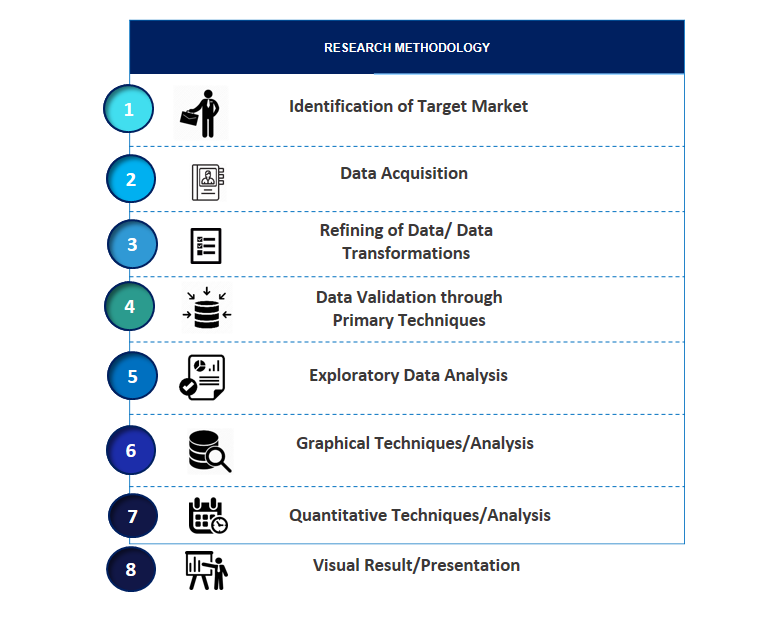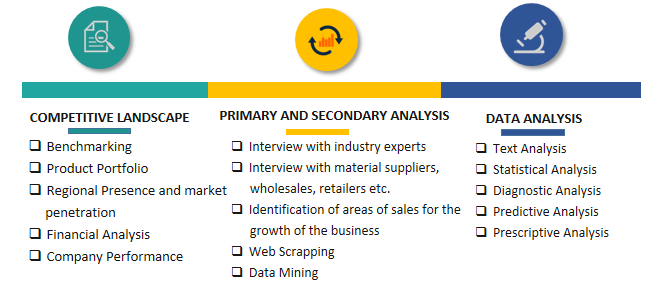Travel Retail Market Introduction and Overview
According to SPER Market Research, the Global Travel Retail Market is estimated to reach USD 190.16 billion by 2034 with a CAGR of 9.65%.
The report includes an in-depth analysis of the Global Travel Retail Market, including market size and trends, product mix, Applications, and supplier analysis. The global retail travel market was estimated to be worth USD 75.69 billion in 2024 and is expected to grow at a compound annual growth rate of 9.65% from 2025 to 2034. Some of the primary drivers driving worldwide market growth include increased travel and tourism activities around the world, the expansion of travel infrastructure, and an increased emphasis on luxury and premium products. High-end companies are growing their position in travel retail by providing duty-free and travel-exclusive collections. This tendency is especially prominent in cosmetics, fragrances, fashion, and electronics.
By Product Insights
In 2024, Significant market share was driven by the need for cosmetics and fragrances. These high-margin products, which are frequently seen as simple and appealing purchases during travel, have a captive audience thanks to the growing number of international visitors. Duty-free shopping provides substantial discounts, increasing the accessibility and allure of expensive brands. Additionally, exclusive product lines and travel-only sets that are unavailable in conventional retail establishments appeal to tourists. Strong sales growth in this market is fueled by the ease of buying premium cosmetic items at travel hubs as well as the attraction of tax-free shopping.
By Distributional Channel Insights
In 2024, the demand for travel-related retail goods at airports and airline stores accounted for significant share of the market. The primary driver of the segment's growth is rising air traffic, which expands the consumer base for retail establishments. In 2023-2024, Because more passengers mean more foot traffic and sales opportunities, especially for duty-free items, luxury goods, and travel necessities, the demand for travel retail products at airport and airline outlets has increased significantly. Increased foot traffic in train stations is a result of the growing number of rail passengers, which is fueled by better rail infrastructure and more services. Travelers looking for quick, high-quality purchases throughout their trip are catered to by the accessibility and convenience of retail establishments at these transit hubs.
By Regional Insights
The travel retail market in North America held a largest market share of the global revenue in 2024. North American major airports have been making significant investments in expansion and upgrading projects. In addition to expanding capacity, these improvements enhance travelers' shopping experiences, increasing airports' appeal as retail destinations. Growing middle class, increased discretionary incomes, and the rebound in both business and leisure travel following the epidemic are other factors contributing to the development.
Market Competitive Landscape
The competitive landscape features intense rivalry among major players wanting to gain a large share of global passenger spending. Established operators like Dufry, Lagardère Travel Retail, and DFS Group dominate with extensive duty-free networks in major airports, using brand alliances, marketing strategies, and digital technologies to boost customer engagement and sales.
Recent Developments:
- In March 2024, Lagardere Travel Retail has announced an exclusive agreement with Raise Lab, a leading firm dedicated to encouraging open innovation. This strategic agreement demonstrates Lagardere Travel Retail's dedication to being a pioneer in innovation within the travel retail sector, with the goal of accelerating the implementation of cutting-edge solutions.
- In July 2023, Dufry, a significant force in the international travel industry, has partnered with Micro Mobility Systems AG, a leader in high-end mobility solutions worldwide. This collaboration sought to transform the travel shopping experience by combining Micro's innovative product and solution offerings with Dufry's extensive worldwide reach and knowledge
Scope of the Report:
| Report Metric | Details |
| Market size available for years | 2021-2034 |
| Base year considered | 2024 |
| Forecast period | 2025-2034 |
| Segments covered | By Product, By Distributional Channel.
|
| Regions covered | North America, Latin America, Asia-Pacific, Europe, and Middle East & Africa. |
| Companies Covered | Aer Rianta International cpt, Avolta AG, China Duty Free Group Co. Ltd, Duty Free Americas, Gebr. Heinemann SE & Co. KG, Lagardere Travel Retail Group, Lotte Corporation, LVMH Moet Hennessy Louis Vuitton (DFS Group), The King Power International Group, The Shilla Duty Free. |
Key Topics Covered in the Report:
- Global Travel Retail Market Size (FY’2021-FY’2034)
- Overview of Global Travel Retail Market
- Segmentation of Global Travel Retail Market By Product (Perfume and Cosmetics, Wines and Spirits, Fashion and Accessories, Tobacco Products, Electronics and Gifts, Food and Confectionery, Others)
- Segmentation of Global Travel Retail Market By Distributional Channel (Airport and Airlines, Train Stations, Ferries, Others)
- Statistical Snap of Global Travel Retail Market
- Expansion Analysis of Global Travel Retail Market
- Problems and Obstacles in Global Travel Retail Market
- Competitive Landscape in the Global Travel Retail Market
- Details on Current Investment in Global Travel Retail Market
- Competitive Analysis of Global Travel Retail Market
- Prominent Players in the Global Travel Retail Market
- SWOT Analysis of Global Travel Retail Market
- Global Travel Retail Market Future Outlook and Projections (FY’2025-FY’2034)
- Recommendations from Analyst
1. Introduction
1.1. Scope of the report
1.2. Market segment analysis
2. Research Methodology
2.1. Research data source
2.1.1. Secondary Data
2.1.2. Primary Data
2.1.3. SPERs internal database
2.1.4. Premium insight from KOLs
2.2. Market size estimation
2.2.1. Top-down and Bottom-up approach
2.3. Data triangulation
3. Executive Summary
4. Market Dynamics
4.1. Driver, Restraint, Opportunity and Challenges analysis
4.1.1. Drivers
4.1.2. Restraints
4.1.3. Opportunities
4.1.4. Challenges
5. Market variable and outlook
5.1. SWOT Analysis
5.1.1. Strengths
5.1.2. Weaknesses
5.1.3. Opportunities
5.1.4. Threats
5.2. PESTEL Analysis
5.2.1. Political Landscape
5.2.2. Economic Landscape
5.2.3. Social Landscape
5.2.4. Technological Landscape
5.2.5. Environmental Landscape
5.2.6. Legal Landscape
5.3. PORTERs Five Forces
5.3.1. Bargaining power of suppliers
5.3.2. Bargaining power of buyers
5.3.3. Threat of Substitute
5.3.4. Threat of new entrant
5.3.5. Competitive rivalry
5.4. Heat Map Analysis
6. Competitive Landscape
6.1. Global Travel Retail Market Manufacturing Base Distribution, Sales Area, Product Type
6.2. Mergers & Acquisitions, Partnerships, Product Launch, and Collaboration in Global Travel Retail Market
7. Global Travel Retail Market, By Product (USD Million) 2021-2034
7.1. Perfume and Cosmetics
7.2. Wines and Spirits
7.3. Fashion and Accessories
7.4. Tobacco Products
7.5. Electronics and Gifts
7.6. Food and Confectionery
7.7. Others
8. Global Travel Retail Market, By Distributional Channel (USD Million) 2021-2034
8.1. Airport and Airlines
8.2. Train Stations
8.3. Ferries
8.4. Others
9. Global Travel Retail Market, (USD Million) 2021-2034
9.1. Global Travel Retail Market Size and Market Share
10. Global Travel Retail Market, By Region, (USD Million) 2021-2034
10.1. Asia-Pacific
10.1.1. Australia
10.1.2. China
10.1.3. India
10.1.4. Japan
10.1.5. South Korea
10.1.6. Rest of Asia-Pacific
10.2. Europe
10.2.1. France
10.2.2. Germany
10.2.3. Italy
10.2.4. Spain
10.2.5. United Kingdom
10.2.6. Rest of Europe
10.3. Middle East and Africa
10.3.1. Kingdom of Saudi Arabia
10.3.2. United Arab Emirates
10.3.3. Qatar
10.3.4. South Africa
10.3.5. Egypt
10.3.6. Morocco
10.3.7. Nigeria
10.3.8. Rest of Middle-East and Africa
10.4. North America
10.4.1. Canada
10.4.2. Mexico
10.4.3. United States
10.5. Latin America
10.5.1. Argentina
10.5.2. Brazil
10.5.3. Rest of Latin America
11. Company Profile
11.1. Aer Rianta International cpt
11.1.1. Company details
11.1.2. Financial outlook
11.1.3. Product summary
11.1.4. Recent developments
11.2. Avolta AG
11.2.1. Company details
11.2.2. Financial outlook
11.2.3. Product summary
11.2.4. Recent developments
11.3. China Duty Free Group Co. Ltd
11.3.1. Company details
11.3.2. Financial outlook
11.3.3. Product summary
11.3.4. Recent developments
11.4. Duty Free Americas
11.4.1. Company details
11.4.2. Financial outlook
11.4.3. Product summary
11.4.4. Recent developments
11.5. Gebr. Heinemann SE & Co. KG
11.5.1. Company details
11.5.2. Financial outlook
11.5.3. Product summary
11.5.4. Recent developments
11.6. Lagardère Travel Retail Group
11.6.1. Company details
11.6.2. Financial outlook
11.6.3. Product summary
11.6.4. Recent developments
11.7. Lotte Corporation
11.7.1. Company details
11.7.2. Financial outlook
11.7.3. Product summary
11.7.4. Recent developments
11.8. LVMH Moët Hennessy Louis Vuitton (DFS Group)
11.8.1. Company details
11.8.2. Financial outlook
11.8.3. Product summary
11.8.4. Recent developments
11.9. The King Power International Group
11.9.1. Company details
11.9.2. Financial outlook
11.9.3. Product summary
11.9.4. Recent developments
11.10. The Shilla Duty Free
11.10.1. Company details
11.10.2. Financial outlook
11.10.3. Product summary
11.10.4. Recent developments
11.11. Others
12. Conclusion
13. List of Abbreviations
14. Reference Links
SPER Market Research’s methodology uses great emphasis on primary research to ensure that the market intelligence insights are up to date, reliable and accurate. Primary interviews are done with players involved in each phase of a supply chain to analyze the market forecasting. The secondary research method is used to help you fully understand how the future markets and the spending patterns look likes.
The report is based on in-depth qualitative and quantitative analysis of the Product Market. The quantitative analysis involves the application of various projection and sampling techniques. The qualitative analysis involves primary interviews, surveys, and vendor briefings. The data gathered as a result of these processes are validated through experts opinion. Our research methodology entails an ideal mixture of primary and secondary initiatives.


